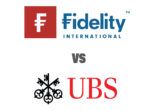The asset manager said its survey, which was conducted in partnership with the Economist Intelligence Unit, found Asian insurers are “committed to implementing changes in a changing market environment”.
Of the more than 200 insurers surveyed from around the world in May and July, 40 were from Asia Pacific, including China, Malaysia, Singapore, South Korea and Taiwan.
“While most insurers recognise they need to change in order to boost shareholder returns, the survey suggests Asian firms are much more focused on using a tactical asset allocation framework to boost shareholder returns than their global counterparts,” David Lomas, head of BlackRock’s Global Financial Institutions Group, said.
Portfolio calls
According to Lomas, Asian insurers are also more active in preparing for the end of quantitative easing policies and are looking to invest into new diversifying fixed income asset classes.
Expecting the US quantitative easing to end in one-to-two years, 70% of Asian insurers said they will cut portfolio duration to reduce their interest rate risk, while 60% said they will move away from benchmarks to adopt more absolute return strategies.
For a slightly longer horizon of the next three years, 75% of Asian insurers said they will make strategic changes in order to produce adequate shareholder returns.
Although bond yields have been rising steadily in the past few months on concerns over US tapering, they remain below average in the most liquid markets and duration risk remains near historic highs.
In Singapore, insurers surveyed cited low investment yields as a key concern, similar to their peers in the US and Europe. To achieve better returns, 70% of insurers in Asia Pacific said they will implement a tactical asset allocation framework and 65% said they will diversify their fixed income exposures.
Driven by low rates, insurers in China (100%), Singapore (100%), Taiwan (75%) and Malaysia (67%) indicated a particularly strong interest in shifting to higher yielding fixed income instruments. In Singapore, 60% said they will allocate more to less liquid assets but only at a small proportion of their portfolio (1%-5%) over the next three years.
Meanwhile, insurers in Singapore showed a strong likelihood of increasing allocations to investment grade fixed income (100%) and higher yield strategies/bank loan (100%).
None of the Singaporean insurers surveyed thought they would likely increase allocations to real estate debt, whereas 80% would expect to increase allocations to real estate equity.
This is a different attitude to most other regional insurers as they are more receptive to both real estate equity and debt allocations, the survey noted.
Private equity (20%) was also cited as a less likely asset class that Singaporean insurers would make allocations to.
ETFs
In Asia, 74% of insurers said they are likely to increase use of exchange trade funds (ETFs) over the next three years. Singaporean insurers were an exception, with none indicating that they will likely use ETFs for long term strategic allocations, yet all of them are likely to increase their use of ETFs over the next three years – an indication that they view ETFs as useful for short term tactical allocations.
“Asian insurers recognise the importance of engaging more closely with external asset managers who can support their specific needs, particularly in the use of new instruments such as ETFs, investment strategy design and risk management,” Lomas said.
Regulatory, operational aspects
Asian insurers, particularly in China and Southeast Asia, strongly believe regulations are making them more risk averse but they do not feel well-prepared.
As a result, firms in the region are seeking more support from asset managers when it comes to investment strategy design (70%), risk management (65%) and product design (63%). Asian insurers indicated that the main challenges for assessing risks across all asset classes in their investment portfolio are: access to risk factors for modelling (55%), lack of data (48%), and lack of sufficient expertise (38%).
















